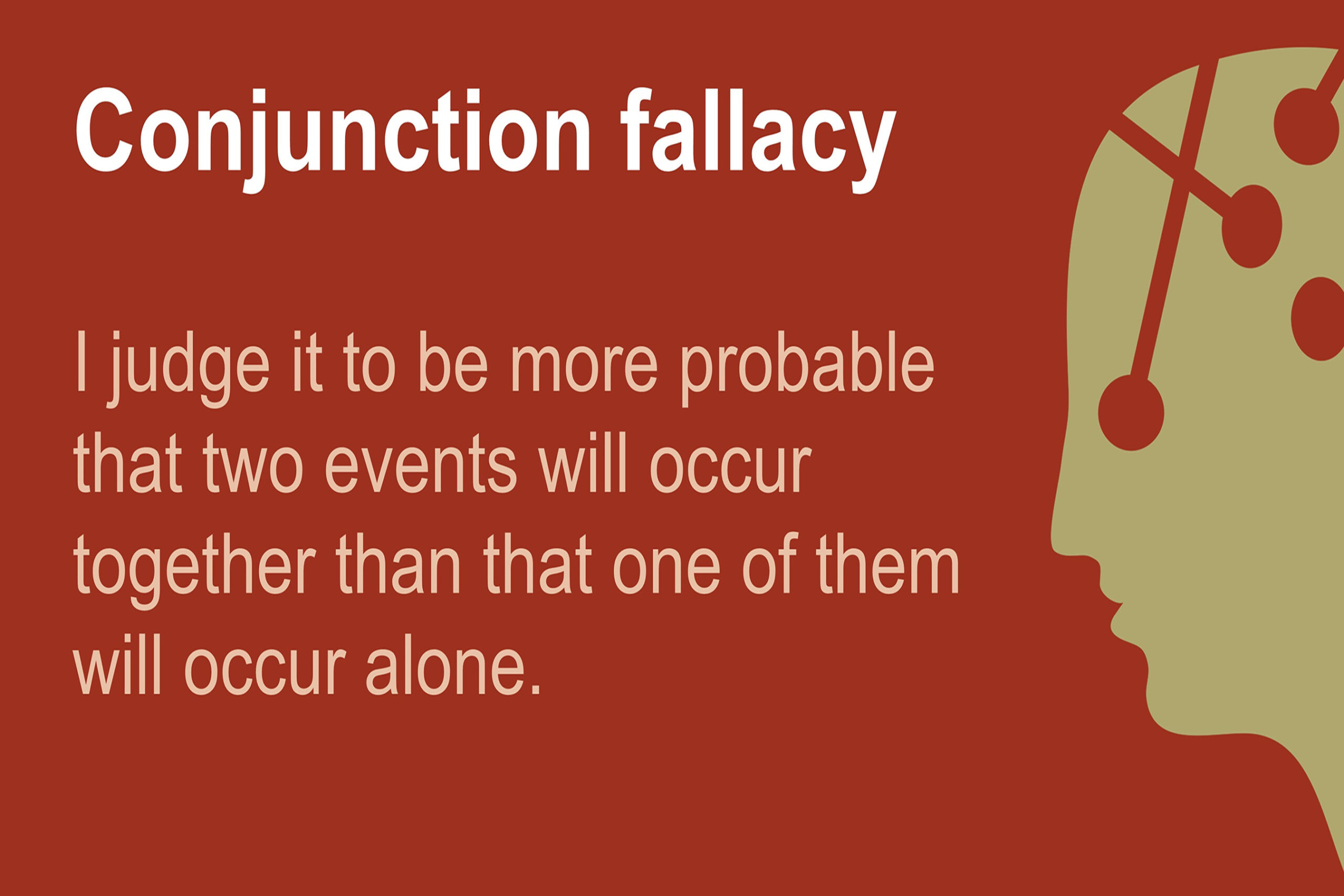The conjunction fallacy is a cognitive bias that occurs when individuals mistakenly judge a combination of two events as more likely to happen than either of the individual events on their own. In other words, people often believe that a specific scenario that includes multiple elements is more probable than a single, more general scenario.
Explanations:
The conjunction fallacy arises from the representativeness heuristic, where people base their judgments on how closely a description matches their mental prototype of a situation. The conjunction of events often appears more detailed and specific, leading people to perceive it as more likely.
Examples:
Legal Cases: Believing that a defendant is more likely to be both a librarian and a feminist (specific scenario) than to be just a librarian (more general scenario).
Job Applicants: Thinking that a candidate is more likely to be both a skilled programmer and a great cook (specific scenario) than to be just a skilled programmer (more general scenario).
Health Diagnoses: Assuming that someone is more likely to have both a rare disease and a common cold (specific scenario) than to have only the rare disease (more general scenario).
Solutions:
Understanding Probabilities: Familiarize yourself with the concept of conditional probability and how it relates to the likelihood of events occurring together.
Critical Thinking: Develop critical thinking skills to evaluate probabilities more accurately and avoid falling into the conjunction fallacy.
Base Rate Information: Consider the base rates or prior probabilities of individual events to make more rational judgments.
Question Assumptions: Question the assumptions and descriptions presented and assess whether the specific scenario is genuinely more likely.
Addressing the conjunction fallacy involves recognizing the tendency to perceive specific scenarios as more likely than they are and consciously applying probabilistic thinking to make more accurate judgments and decisions.
